Introduction to fish farming in Tamil Nadu: Fish farming is a form of aquaculture system in which fish are raised in enclosures to be sold as food. It is one of the fastest-growing areas for animal feed production. Fish farming plays an important role in the socio-economic development of the country. It is recognized as a powerful source of income and employment as it stimulates the development of many ancillary industries, and is a source of cheap and nutritious food in addition to being a foreign exchange earner.
Most importantly, it is the source of livelihood for a large section of the country’s economically backward population. Opportunities in the fish farming business require specialized knowledge, expertise, and careful daily supervision. Fish is a healthy, protein-rich, and delicious food that is low in cholesterol and calories. The fish diet is in high demand due to its vitamins and proteins.
Guide on fish farming in Tamil Nadu, objectives, land selection, fish farm types, pond design, suitable fish species, cost, schemes and profit
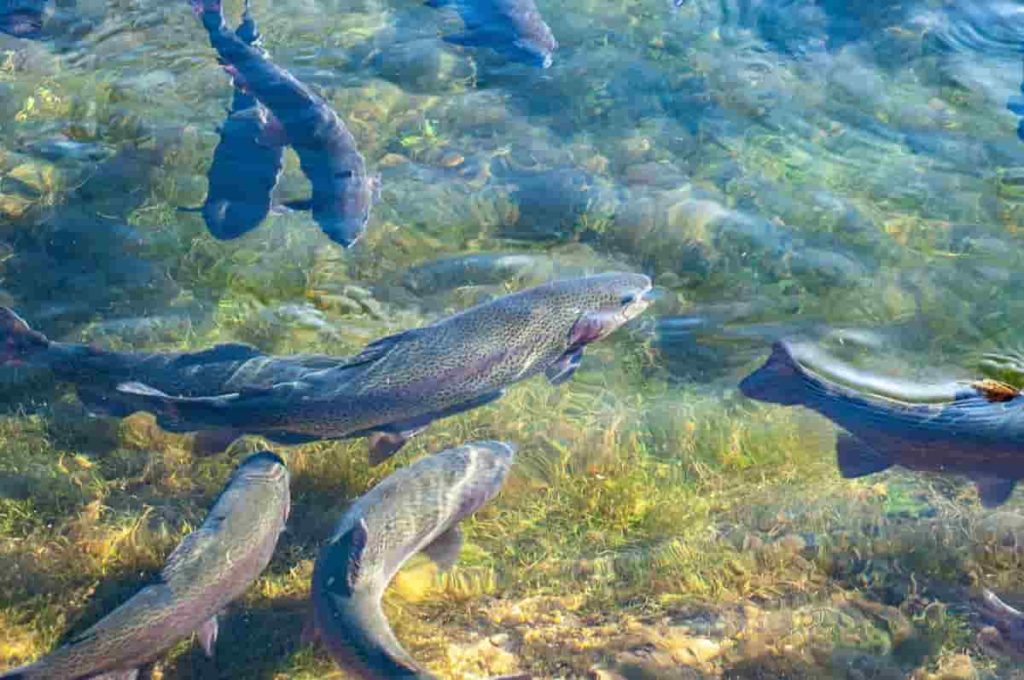
The fisheries sector was run with the following objectives
- Increase fish production by encouraging fishermen to exploit the underutilized marine fishery resources to reduce fishing pressure in coastal areas.
- Increase water resource production in inshore areas through conservation measures, increase stock, establish artificial rocks along the coast, etc.
- To promote knowledge and understanding of fisheries resources, their conservation, management, and development, and in particular sustainable eco-friendly coastal aquaculture.
- Improving and strengthening infrastructure facilities for fish landing and marketing.
- Increase domestic fish production in reservoirs, panchayat tanks, and ponds.
- Provide consumers with healthy and safe fish and fish products.
Is the fish farming business profitable?
Fish farming is a lucrative business for many reasons. Here are some of them;
- Fish and fish products are in high demand all over the world.
- The market demand and price of fish and fish products are always high.
- Commercial Fish Farming Enterprise provides a large-scale supply of fish based on demand. Fishing in the wild does not always meet the market demand. Under these circumstances, commercial fish farming can fill this gap.
- Fish can be easily picked up in tanks unless they are ready to be sold or marketed, and they do not need to collect large quantities of wild fish. As a result, commercial fish farming contributes to the conservation of natural habitats.
- When compared to wild fish, some species of farmed fish are healthy and delicious. On commercial fish farms, fish are often fed a variety of nutritious and protein-rich foods or pellets. As a result, farmed fish are healthier than wild fish.
- Different types of fast-growing fish are available. Cultivating these fast-growing fish species ensures a quick return on your investment.
- People with other professions or jobs can also start this business.
- Bank loans and funding assistance are also available for fish farming projects.
In case if you miss this: Top 50 Fish Farming Tips, Ideas, and Techniques
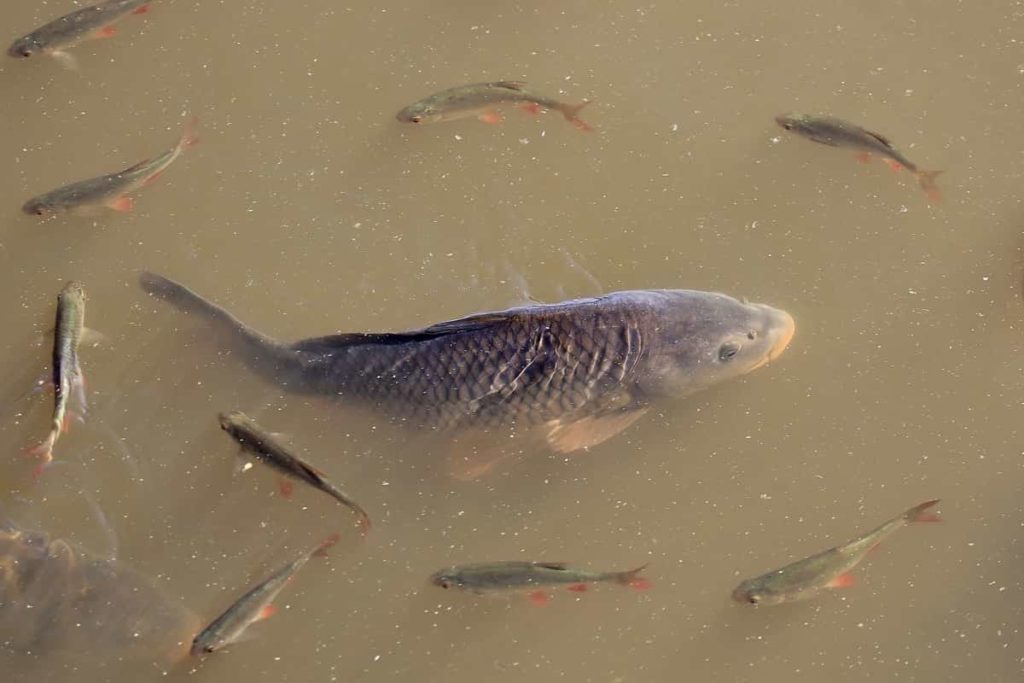
Aquaculture, which involves the breeding and rearing of fish, refers to fish farming. These fish are sold as food and in the present era, fish farming is emerging as the fastest-growing sector as far as animal feed production is concerned. At present, fish farming is not limited to fishermen and coastal people, but many traders and industrialists from all walks of life are jumping into the country’s fisheries sector.
New technologies such as aquaponics and tank fish farming have made it easier for us to grow fish in a small space. The country’s largest banks are financing fishing activities such as marine, inland, and brackish water fishing.
Select an appropriate farmland/area for fish farming
Choosing the right land or area is very important for starting a commercial fish farming business. Not all areas are suitable for a profitable business. And some areas have abundant natural resources, which are very effective for the fish farming business.
Types of your fish farm
There are several specific types of fish farms in the intensive and extensive fish farming system. Start a fish farming business by choosing any type of system. You can select cage system, tank system, or pond system. In the case of fish farming in tanks, make one or a few tanks and store the fish there.
Pond design and construction for fish farming
After choosing your farm area, create a suitable pond. Make a good design and build the pond according to your desired design before building. When designing a pond, make sure you have all the necessary facilities to maintain a profitable fish farming business. Although the design of the pond depends on the species of fish you intend to raise and your location.
You can consult your nearest Fisheries Institute to learn more about pond design for specific species of fish. Always try to maintain a good atmosphere in the pond. A good environment helps the fish to survive and thrive and this directly involves better production and maximum profit.
In case if you miss this: Fish Farming In Maharashtra, Biofloc, Subsidy, Loan
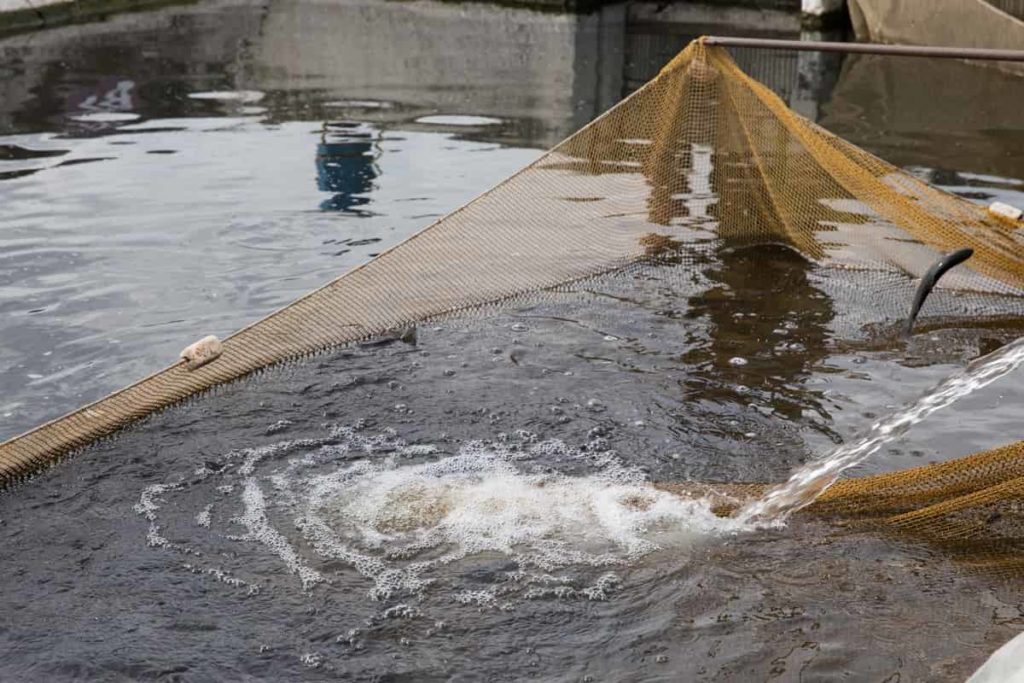
Suitable fish species for fish farming in Tamil Nadu
The selection of suitable fish species is essential to maximize profits in the fish farming business. Select the breeds that are in high demand and price in the local market. The most important fish species used in fish farming worldwide are Carp, Salmon, Tilapia, and Catfish. There are many species of all these fish and they are suitable for farming in all kinds of agricultural climatic conditions. Choose fish species for farming according to your local facilities, demand, and price.
Marine finfish culture – Cobia, Sea Bass, and Pompano are the favorite varieties of candidates for finfish farming. These fish are very valuable seafood fish with soft and delicious meat which has good market potential. Enclosed bays, estuaries, and shallow coastal waters are suitable for farming. Hatchery technology has been completed for the production of sea bass seeds and there is no constraint in seed production. Sea bass can be raised in backwater cages.
Edible fishes from Tamil Nadu
Fresh water fishes
1. Indian major carps
- Catla Catla – Catla has a deep body with a prominent head, large upturned mouth, lips without fringe, devoid of barbels, and 14-16 branched rays are the identifying features. It feeds on zooplankton at the surface of the pond using large flower rakers. However, young (15-20 mm) feed on zooplankton and phytoplankton. It grows to a maximum size of 1.8 meters (45 kg). It is a fast-growing breed in the Indian large corps. The first-year growth is 35-45 cm and about 1.5 – 2.0 kg. It matures in the second year.
- Cirrhina mrigala (Mrigal) – Small head of a linear body with a blunt snout, subterminal mouth with thin non-fringed lips, dorsal fin with 12-13 branched beams, and bright silver body with golden color to identifying features. This is a bottom feeder on decaying organic and vegetable debris. However, its young eat at the zooplankton. The maximum size obtained is 0.9 m. In the first year, it grows to about 30 cm (700 g).
2. Catfish (sort: Siluriformes-‘Keluthi ‘)
Catfish are air-breathing or live fish because they can breathe directly into the atmosphere. They can live long without water and therefore can be carried over long distances alive and well. The body is without scales and has two pairs of long barbells in each of the upper and lower jaws. The mouth is very long with teeth and jaw. Most catfish are predators and man-eaters, feeding all the animals in the pond, including fish fry.
3. Murrels or snake heads
These fishes are air-breathing and are in good demand. Elongated and cylindrical body, depressed head, large and long mouth are its distinguishing features.
- Channa marulius (giant snakehead) – Dorsal and anal fins of this species have long and without spines. It reaches a maximum size of 1.2 meters. It is suitable for culture in ponds with tilapia, the young of which are a source of food for this breed.
- Striatus (Striped snake-head or Common murrel) – It has stripes on its body. Gets a maximum size of 90 cm.
4. Tilapia
Oreochromis mossambicus – An exotic fish that was introduced to India in 1952 from the east coast of Africa. Maturity also occurs in people up to two months of age. It grows about eight times a year.
Brackish water fishes in Tamil Nadu
In Tamil Nadu, brackish water fishes spend most of their lives in the backwaters of river mouths (estuaries), mangrove swamps, and coastal lagoons. Grey mullets (‘Madavai’), Chanos Chanos (Milkfish), Pearl spots (‘Kari’meen), Seabass (‘Koduva’), the Seabreams.
Marine Fishes in Tamil Nadu
The coastal seafood of Tamil Nadu includes cartilaginous and bony fish.
- Elasmobranchii
- Cartilagenous fishes – Sharks and skates.
- Bony Fishes – Pomfrets, Indian Mackeral, Seer fish, Carangids (‘Para’ meen), Ribbon fishes, Catfishes, Flat fishes, Sardines.
Learn the skills for starting a fish farming
- You need more than luck to succeed in the fish farming business. You can get training from government-run farms that arrange training.
- Make sure you have a permanent source of quality water.
- Examine the water in which you are starting to cultivate fish, both chemically and bacteriologically.
- Learn about the latest technical methods of risk assessment as well as risk management.
- Select reliable suppliers for fish eggs, fingerlings, and fish feed are important in fish farming.
- Evaluate the legal compliance and permission required to start a fish farming business in your area.
In case if you miss this: Fish Farming In Punjab, How To Start, Tips, Ideas
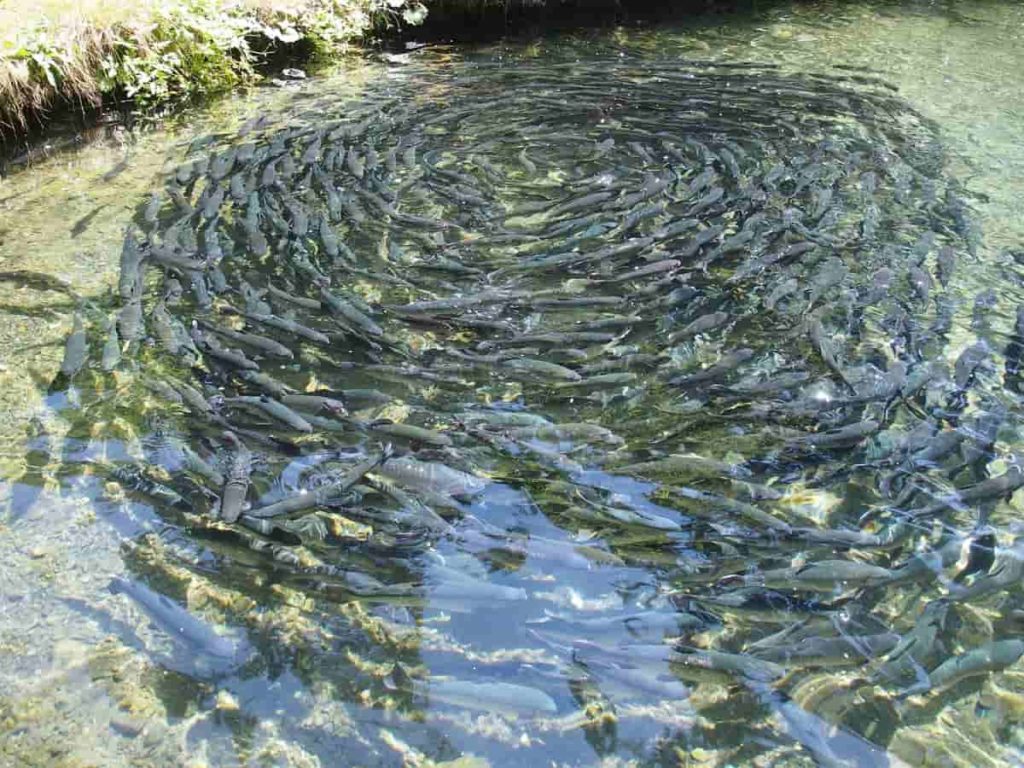
Cost of starting a fish farming business
There are two major types of investment in this farming business. One is fixed capital cost and the other type is operating cost. Capital costs include land and building, pond construction, vehicles for transportation, plumbing arrangements, several tanks, oxygen meters, etc.
In a fish farming business, operating costs include some elements like the purchase of eggs or fingers, fish feed, electricity, fuel, labor, chemicals, medicines, insurance, transportation, and other maintenance costs.
Carefully prepare a detailed calculation of the cost of your proposed fish farming plan before entering the business. The calculation will change depending on the selected fish species. And also, according to your desired production and total land area.
What equipment is needed for fish farming?
In fish farming, another important aspect is the purchase of certain types of equipment. The below are some of the basic equipment required in fish farming;
- Pumps
- Aeration devices
- Net / Seine Reels
- Handling and grading equipment
- Graders
- Fish counters
In case if you miss this: Fish Farming in Kerala – How To Start, RAS, Biofloc
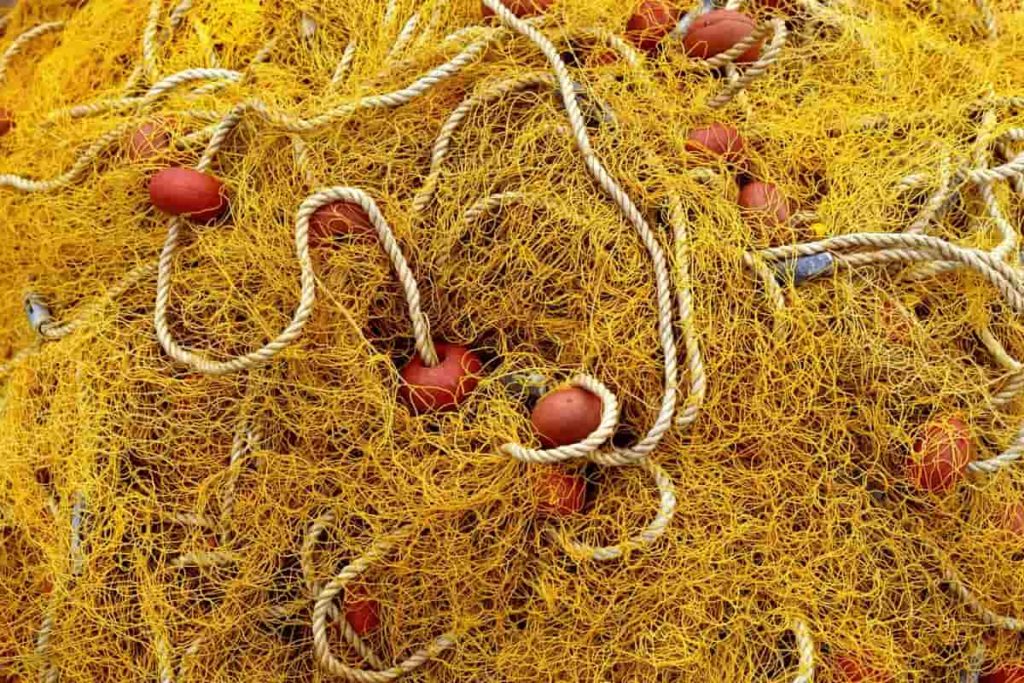
Feeding management for fish farming
For starting a commercial fish farming business, feeding is the most important part. Always try to provide your fish with high-quality and nutritious food. High-quality food not only ensures maximum production but also helps in keeping the fish healthy. So, supplement your fish with natural foods. There are various types of commercial fish feed available in the market for specific species of fish.
You can buy these commercial feeds from the market or make your own. Learn more about making supplementary fish feed, if you want to make it yourself. Be sure to include all kinds of essential nutrients, such as vitamins, minerals, and salts. Depending on the species of fish, feed your fish several times a day.
Marine and inland fish farming schemes in Tamil Nadu
The below schemes are some of the important state and central government schemes implemented by the Fisheries Department for the benefit of the people of Tamil Nadu. Then, these schemes can be used by any person in Tamil Nadu to start a business. These schemes thrive in all walks of life.
Build freshwater / brackish water fish hatcheries
Unit cost – With a minimum capacity of about 5 million postlarvae per year subject to Rs. 50 lakh per unit.
Terms and conditions
- Beneficiaries will provide documentary evidence from all burdens and financial resources, complete technical details including necessary approvals/permits, etc. No funds will be provided for the land.
- The Fisher Cooperative / Collective will be eligible for Central Financial Assistance and they should forward their proposals with appropriate recommendations through the concerned State / Centrally Administered Government.
- Suggestions from Central and State Government Organizations / Federations / Corporations / Agencies etc. may be submitted directly to NFDB.
- Beneficiaries have the required technical skills for hatchery construction, operation, and management.
- Post-construction operations, hatcheries will be managed and maintained by the users at their own expense in a satisfactory manner.
- The NFDB will also set up and manage hatcheries directly with the proper commercial location.
How to apply – The user can apply for the scheme at the relevant AD offices.
Build Recycling Aquaculture Systems (RAS)
Unit Cost – Low-Cost RAS – Rs. 15.00 Lakh Per Unit
Cost – Medium Size RAS – Original, with Rs. 50.00 lakh per unit for at least 8 tanks. The medium-sized RAS unit contains about Rs. 31 lakh capital cost and Rs. 19 lakhs as operational cost. Central assistance is also provided as a one-time operational cost.
Low-cost RAS system: 5 x 5 x 4 meters cement tank (100 m3 each), the minimum production capacity of 2 tons of fish per tank
Medium RAS system means at least 8 tanks and the minimum size of each tank is about 7.65 x 7.65 x 1.5 m (90 m3 each). Minimum production capacity of 5 tons of fish per tank.
Terms and conditions
- Beneficiaries will submit a self-made detailed project report (DPR) with full details.
- No funds will be provided for the land.
- The detailed project report will include details of expected direct and indirect employment generation for the local population, increase in fish production, specific timelines for implementation of the project, etc.
- Project proposals of Cooperative / Collective / Businessmen will be submitted to NFDB. These beneficiaries will be provided central assistance in the form of a back-end subsidy.
- For Central / State Government Organizations / Federations / Corporations / Agencies etc., the amount of financial assistance will be decided on a case-by-case basis in consultation with the concerned.
- Construction operations, management, and maintenance after RAS will be carried out by the users at their own expense in a satisfactory manner.
- NFDB will also establish RAS management with an appropriate business approach.
- The built infrastructure should have the required requirements for RAS including a water treatment unit.
How to apply – The user can apply for the scheme at the relevant AD offices.
Fisheries development schemes (especially seed production) in Tamil Nadu
The inland fisheries schemes have contributed to the increasing growth rate of domestic fish production in Tamil Nadu. Details of the schemes are given below.
Inland Fisheries Development Program in Tamil Nadu
The following schemes were implemented during the Eleventh Five Year Plan period (Director Fisheries, Government of Tamil Nadu) in connection with the development of inland fisheries in Tamil Nadu.
- Assistance to inland fish farmers through Fish Farmers Development Agencies (Central and State Schemes)
- National Agriculture Development Program (NADP) Scheme
- National Fisheries Development Board Scheme (NFDB)
- Tamil Nadu Irrigation Agricultural Modernization and Reservoir Rehabilitation and Management Scheme (IAMWARM)
Various Inland Agencies implementing fisheries development programs
- Department of Fisheries, Tamil Nadu
- TANUVAS (the Tamil Nadu University of Veterinary and Animal Sciences)
Harvesting and marketing tips for fish farming
Harvesting becomes suitable for fish after a certain time. Although this harvesting time depends on the species of fish. When large numbers of fish reach the marketing age, start harvesting. Try harvesting in the morning or afternoon when the temperature is low. Finally, send the fish to market as soon as possible after harvest.
In case if you miss this: Fish Farming In Nigeria – Fish Species In Nigeria
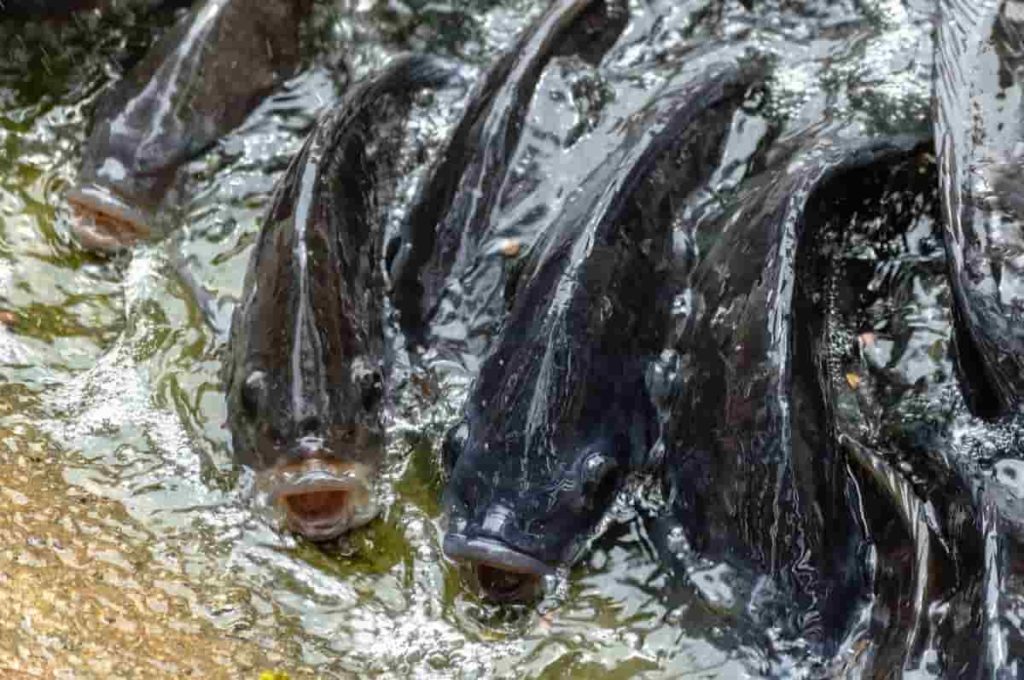
Marketing of fish and fish products
Marketing is the easiest part of the fish farming business. There are many markets available where you can sell your fish products and there is a huge demand for all types of fish in the market.
Establishment of Fish Processing Parks in Tamil Nadu – The government has announced to set up fish processing parks in 13 coastal cities of Tamil Nadu to develop adequate infrastructure facilities to promote exports.
Modernization of fish markets – Fish markets are being set up at 19 locations with the help of NFDB and the state government and modern hygiene facilities are being provided to the consumers to provide healthy and good quality fish to the fishermen. This will help them to get a fair price for their fish.
Coastal aquaculture system in Tamil Nadu
Coastal aquaculture has been recognized as an important source of employment and food security to meet the food security and nutritional needs of our growing population. In the context of increasing food security in the modern world, fish and fish products are considered among the safest foods produced by animals. The second-longest coastal region in the country is Tamil Nadu with abundant natural resources for coastal aquaculture.
Marine fisheries development in Tamil Nadu
Tamil Nadu has a coastal length of 1,076 km (13% of the country’s coastline), 1.9 million sq km of EEZ (9.4% of India’s EEZ), and a continental shelf of approximately 41,412 sq km and is one of the leading states in India. The marine fish production of the state is 4.97 lakh tonnes. In coastal waters, 38,779 traditional crafts and 5893 machine boats take advantage of the fishing potential.
Tamil Nadu has an area of 3.83 lakh hectares. Efficient inland water resources include reservoirs, large irrigation tanks, small irrigation tanks, short seasonal tanks, ponds, streams, backwaters, and derelict water bodies. With the increase in demand for fish, there is a need to substantially increase the total fish production of the state from all available fishing resources.
However, aquaculture is emerging as a significant activity in rural areas to increase fish production and income. Integration of fish culture with agriculture has proved to be an option to increase the productivity of the unit through the aquaculture system. The government is determined to triple domestic fish production in the coming years.
Tamil Nadu schemes for fish ponds
The Government of Tamil Nadu is providing a 100% subsidy for the construction of farm ponds. The scheme was launched three years ago and was well-received by farmers in the drought-hit Shiva Ganga district. The ponds helped increase groundwater in the area and divert available rainwater for irrigation.
The government provides between Rs. 60,000 to Rs. 1 lakh depending on certain principles. This gives three benefits to the farmers. In addition to obtaining water for cultivation, it also helps in raising fish and raising good livestock grass on the banks of ponds. An official of the Agriculture Engineering Department said that 1680 ponds have already been constructed in Shiv Ganga.
Apply for a fishing license in Tamil Nadu
Procedure
- Applicants may apply for a fishing license or permit before their fishing equipment such as fishing rod, net, reels, fishing line, hooks, vessel, etc. should be registered in the State Directorate of Fisheries.
- Registration of fishing equipment is a one-time activity.
- Applicants cannot apply for a fishing license or permit without first registering their fishing gear.
Apply in person
- Applicants applying for a fishing license or permit should apply for a fishing license at the state Department of Fisheries Directorate.
- The applicant has to fill the application form as per the instructions and submit it to the concerned authorities.
- The applicant has to provide all the required documents to the authorities for verification and also pay the required application fee.
- After verifying the documents, the authorities will issue a fishing license.
- How to Make Houseplants Bushy: Effective Tips and Ideas
- Innovative Strategies for Boosting Coconut Pollination and Yield
- Pollination Strategies for Maximum Pumpkin Yield
- The Complete Guide to Chicken Fattening: Strategies for Maximum Growth
- Natural Solutions for Tulip Problems: 100% Effective Remedies for Leaf and Bulb-Related Issues
- Revolutionizing Citrus Preservation: Towards a Healthier, Greener Future
- Natural Solutions for Peony Leaf and Flower Problems: 100% Effective Remedies
- Maximizing Profits with Avocado Contract Farming in India: A Comprehensive Guide
- Natural Solutions for Hydrangea Problems: 100% Effective Remedies for Leaf and Flowers
- The Ultimate Guide to Choosing the Perfect Foliage Friend: Bringing Life Indoors
- From Sunlight to Sustainability: 15 Ways to Use Solar Technology in Agriculture
- The Ultimate Guide to Dong Tao Chicken: Exploring from History to Raising
- The Eco-Friendly Makeover: How to Convert Your Unused Swimming Pool into a Fish Pond
- Mastering the Art of Delaware Chicken Farming: Essentials for Healthy Backyard Flocks
- 20 Best Homemade Fertilizers for Money Plant: DIY Recipes and Application Methods
- How to Craft a Comprehensive Free-Range Chicken Farming Business Plan
- Brighten Your Flock: Raising Easter Egger Chickens for Beauty and Bounty
- How to Optimize Your Poultry Egg Farm Business Plan with These Strategies
- Subsidy for Spirulina Cultivation: How Indian Government Schemes Encouraging Spirulina Farmers
- Ultimate Guide to Raising Dominique Chickens: Breeding, Feeding, Egg-Production, and Care
- Mastering the Art of Raising Jersey Giant Chickens: Care, Feeding, and More
- Ultimate Guide to Raising Legbar Chickens: Breeding, Farming Practices, Diet, Egg-Production
- How to Raise Welsummer Chickens: A Comprehensive Guide for Beginners
- How to Protect Indoor Plants in Winter: A Comprehensive Guide
- Ultimate Guide to Grow Bag Gardening: Tips, Tricks, and Planting Ideas for Urban Gardeners
- Guide to Lotus Cultivation: How to Propagate, Plant, Grow, Care, Cost, and Profit
- Agriculture Drone Subsidy Scheme: Government Kisan Subsidy, License, and How to Apply Online
- Ultimate Guide to Raising Araucana Chickens: Breed Profile, Farming Economics, Diet, and Care
- Bringing Hydroponics to Classroom: Importance, Benefits of Learning for School Students
- Ultimate Guide to Raising Polish Chickens: Breed Profile, Farming Economics, Diet, and Care
- Ultimate Guide to Raising Australorp Chickens: Profile, Farming Economics, Egg Production, Diet, and Care
- Silkie Chicken Farming: Raising Practices, Varieties, Egg Production, Diet, and Care
- Sussex Chicken Farming: Raising Practices, Varieties, Egg Production, Diet and Care
- Homemade Feed Formulations for Livestock: Discover Cost-effective Starter to Finisher Feed Recipes
- 20 Best Pig Weight Gain Supplements: Top Swine Weight Gain Formulas
- Ultimate Guide to Elderberry Farming: Propagation, Planting, Yield, Cost, and Profit